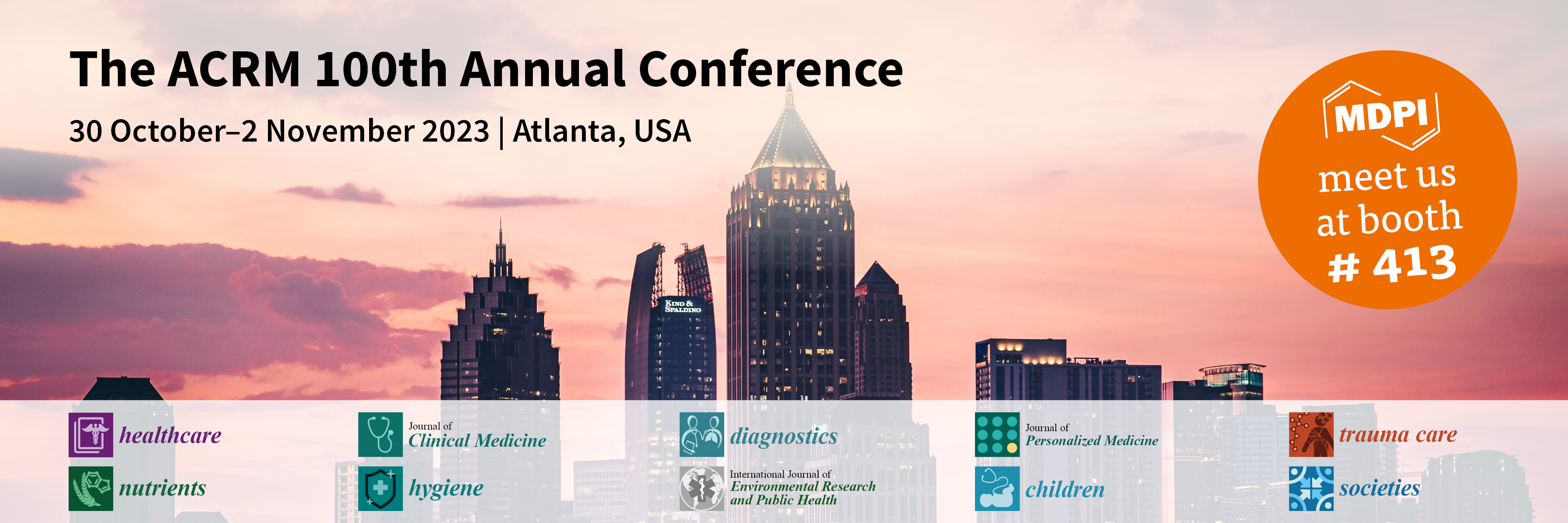-
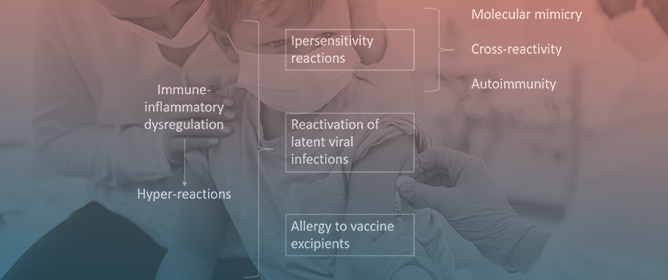 COVID-19 and Related Vaccinations in Children: Pathogenic Aspects of Oral Lesions
COVID-19 and Related Vaccinations in Children: Pathogenic Aspects of Oral Lesions -
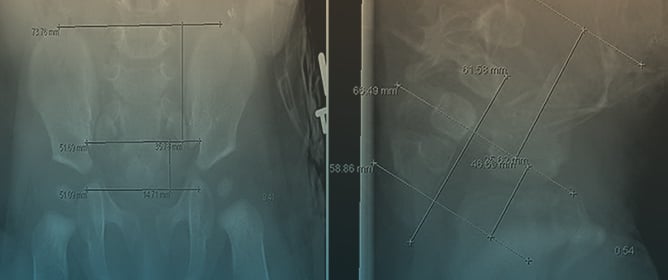 State of the Art Bowel Management for Pediatric Colorectal Problems: Anorectal Malformations
State of the Art Bowel Management for Pediatric Colorectal Problems: Anorectal Malformations -
 The Therapeutic Aspects of Embroidery in Art Therapy from the Perspective of Adolescent Girls in a Post-Hospitalization Boarding School
The Therapeutic Aspects of Embroidery in Art Therapy from the Perspective of Adolescent Girls in a Post-Hospitalization Boarding School -
 Differential Diagnosis of ICD-11 Personality Disorder and Autism Spectrum Disorder in Adolescents
Differential Diagnosis of ICD-11 Personality Disorder and Autism Spectrum Disorder in Adolescents -
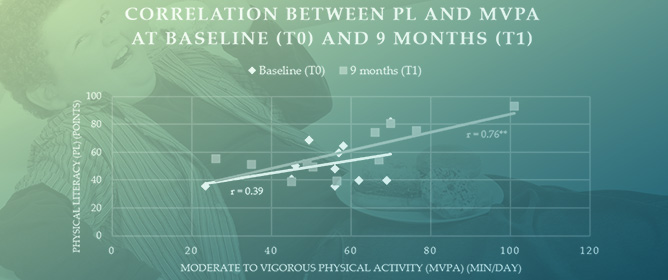 The Effectiveness of a Physical Literacy-Based Intervention for Increasing Physical Activity Levels and Improving Health Indicators in Overweight and Obese Adolescents (CAPACITES 64)
The Effectiveness of a Physical Literacy-Based Intervention for Increasing Physical Activity Levels and Improving Health Indicators in Overweight and Obese Adolescents (CAPACITES 64)
Journal Description
Children
Children
is an international, peer-reviewed, open access journal of pediatrics, focusing on the dissemination of clinical, epidemiological and translational science relevant to children’s health, published monthly online by MDPI.
- Open Access— free for readers, with article processing charges (APC) paid by authors or their institutions.
- High Visibility: indexed within Scopus, SCIE (Web of Science), PubMed, PMC, and other databases.
- Journal Rank: JCR - Q2 (Pediatrics)
- Rapid Publication: manuscripts are peer-reviewed and a first decision is provided to authors approximately 16 days after submission; acceptance to publication is undertaken in 2.5 days (median values for papers published in this journal in the first half of 2023).
- Recognition of Reviewers: reviewers who provide timely, thorough peer-review reports receive vouchers entitling them to a discount on the APC of their next publication in any MDPI journal, in appreciation of the work done.
- Scope: Public Health and Epidemiology, Global Health, General Pediatrics, Pediatric Subspecialties, Pediatric Hospitalist Medicine
Impact Factor:
2.4 (2022);
5-Year Impact Factor:
2.6 (2022)
Latest Articles
Training Packages and Patient Management Tools for Healthcare Staff Working with Small, Nutritionally At-Risk Infants Aged under 6 Months: A Mixed-Methods Study
Children 2023, 10(9), 1496; https://doi.org/10.3390/children10091496 (registering DOI) - 01 Sep 2023
Abstract
Skilled staff are essential for successfully managing child malnutrition, especially when dealing with small, nutritionally at-risk infants aged under 6 months. Training and patient management tools provide healthcare workers with core knowledge, skills, and support. To inform more effective future approaches and support
[...] Read more.
Skilled staff are essential for successfully managing child malnutrition, especially when dealing with small, nutritionally at-risk infants aged under 6 months. Training and patient management tools provide healthcare workers with core knowledge, skills, and support. To inform more effective future approaches and support the rollout of new WHO wasting prevention/treatment guidelines, we aimed to map and understand globally available training and patient management tools. In a mixed-methods study, we searched the literature to identify different training packages and management tools and conducted semi-structured key informant interviews with staff working in a variety of internationally organizations and settings. Data were analyzed using a phenomenological approach. We found 14 different training packages targeting different settings, including inpatient, outpatient, and humanitarian contexts. Curricula varied, especially around breastfeeding and maternal assessment, mental health, and nutritional status. Key informants (n = 9) reported gaps regarding counseling skills, time for practice, and how to effectively provide mental health counseling. Training delivery was highly dependent on resources and setting. In conclusion, future training should consider setting-specific needs, opportunities, and limitations. Emphasis on breastfeeding-support skills, mental health support, and counseling skills is needed. Enhanced practical sessions, refresher trainings, and ongoing monitoring and support are vital to ensure sustained high-quality services.
Full article
(This article belongs to the Section Global and Public Health)
►
Show Figures
Open AccessArticle
High-Intensity Interval Training in Female Adolescents with Moderate or Severe Obesity
by
, , , , , and
Children 2023, 10(9), 1495; https://doi.org/10.3390/children10091495 (registering DOI) - 01 Sep 2023
Abstract
This study aimed to investigate the impact of moderate- or high-intensity interval training (MIIT or HIIT) on anthropometric and biological measurements in four groups of females with obesity. Fifty-seven participants were divided into a moderate obesity group (MOG, n = 29) and a
[...] Read more.
This study aimed to investigate the impact of moderate- or high-intensity interval training (MIIT or HIIT) on anthropometric and biological measurements in four groups of females with obesity. Fifty-seven participants were divided into a moderate obesity group (MOG, n = 29) and a severe obesity group (SOG, n = 28). Two sub-groups were established to practice HIIT and MIIT programs (SOGHI, n = 14; SOGMI, n = 14; MOGHI, n = 14; MOGMI, n = 15). During the training sessions, each group performed two sets of 4 × 1 min intervals on a cycle ergometer. The intervals were conducted at 65% and 85% of the heart rate reserve (HRR) for MIIT and HIIT, respectively. Between each repetition, there was an active recovery phase at 50% HRR, and, between sets, there was a 4 min period of free pedaling. All groups significantly improved their anthropometric data, while only MOGHI and SOGHI significantly improved their lean body mass (LBM) and blood lactate (BL), with p ˂ 0.05; the higher percentage of change in blood insulin levels (−25.49 and −25.34) and the homeostasis model assessment of the insulin resistance index (−31.42 and −28.88) were noted. Only MOGHI showed improvements in growth hormone (GH) and blood glucose (p < 0.05), which were negatively correlated with body fat percentage (r = −0.76 and r = −0.72) and waist circumference (r = −0.77 and r = −0.82), respectively. We may conclude that HIIT was an effective method of managing anthropometric and biological parameters, as confirmed by the pronounced body fat reduction in the moderate obesity group.
Full article
(This article belongs to the Special Issue 10th Anniversary of Children: Urgent Issues in the Health of Children – 2023–2033)
Open AccessArticle
Multisensory Texture Perception in Individuals with Williams Syndrome
Children 2023, 10(9), 1494; https://doi.org/10.3390/children10091494 - 31 Aug 2023
Abstract
The sensory profile of people with Williams syndrome (WS) is characterised by atypical visual and auditory perceptions that affect their daily lives and learning. However, no research has been carried out on the haptic perception, in particular in multisensory (visual and haptic) situations.
[...] Read more.
The sensory profile of people with Williams syndrome (WS) is characterised by atypical visual and auditory perceptions that affect their daily lives and learning. However, no research has been carried out on the haptic perception, in particular in multisensory (visual and haptic) situations. The aim of this study was to evaluate the communication of texture information from one modality to the other in people with WS. Children and adults with WS were included, as well as typically developing (TD) participants matched on chronological age (TD-CA), and TD children matched on mental age (TD-MA). All participants (N = 69) completed three matching tasks in which they had to compare two fabrics (same or different): visual, haptic and visuo-haptic. When the textures were different, the haptic and visual performances of people with WS were similar to those of TD-MA participants. Moreover, their visuo-haptic performances were lower than those of the two TD groups. These results suggest a delay in the acquisition of multisensory transfer abilities in individuals with WS. A positive link between MA and visual and visuo-haptic abilities only in people with WS suggests that they could benefit from an early intervention to develop their abilities to process and transfer multisensory information.
Full article
(This article belongs to the Section Child and Adolescent Psychiatry)
►▼
Show Figures
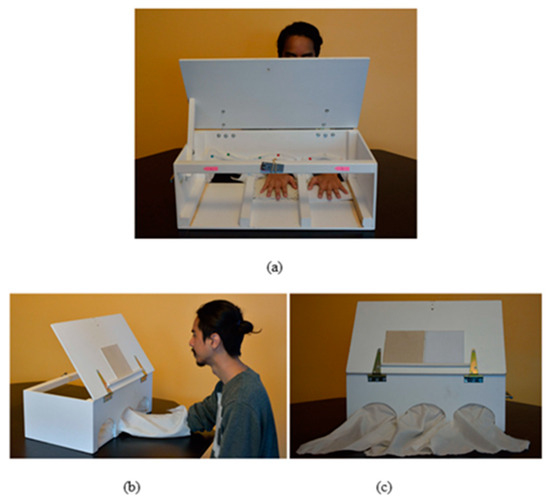
Figure 1
Open AccessArticle
The Association of Serum Uric Acid Levels and Various Uric Acid-Related Ratios with Insulin Resistance and Obesity: A Preliminary Study in Adolescents
Children 2023, 10(9), 1493; https://doi.org/10.3390/children10091493 - 31 Aug 2023
Abstract
Background: Studies have shown that serum uric acid levels and uric acid-related ratios, such as uric acid-to-albumin ratio (UAR), uric acid-to-creatinine ratio (UCR), uric acid-to-high-density lipoprotein cholesterol (HDL cholesterol) ratio (UHR), and uric acid-to-lymphocyte ratio (ULR), are associated with various diseases and their
[...] Read more.
Background: Studies have shown that serum uric acid levels and uric acid-related ratios, such as uric acid-to-albumin ratio (UAR), uric acid-to-creatinine ratio (UCR), uric acid-to-high-density lipoprotein cholesterol (HDL cholesterol) ratio (UHR), and uric acid-to-lymphocyte ratio (ULR), are associated with various diseases and their complications, and that these ratios can be used as biomarkers. In the current study, we aimed to investigate uric acid levels in obese adolescents and the relationship of uric acid-related ratios with insulin resistance and obesity for the first time in the literature. Methods: A total of 100 adolescents (60 obese and 40 healthy) aged 10–17 years were retrospectively included. Participants were assigned to two groups: the obese group and the healthy control group. Obesity was defined as a body mass index (BMI) >the 95th percentile for age and gender. Demographic and laboratory data (serum glucose, urea, creatinine, uric acid, albumin, aspartate aminotransferase (AST), alanine aminotransferase (ALT), C-reactive protein (CRP), total cholesterol, triglyceride, HDL cholesterol, thyroid-stimulating hormone (TSH), free T4 (fT4), insulin levels, and complete blood count) were obtained from the laboratory information management system. A homeostatic model of assessment for insulin resistance (HOMA-IR), low-density lipoprotein cholesterol (LDL cholesterol), and uric acid-related ratios were calculated. Results: Uric acid, UAR, UCR, and UHR levels of obese adolescents were significantly higher than the healthy group (p < 0.05). We found that HOMA-IR was positively correlated with uric acid, UAR, and UHR. No correlation was found between BMI and uric acid or uric acid-related ratios. We did not find any difference between the two groups in terms of ULR levels, and we did not find any correlation between BMI and HOMA-IR. Conclusion: High levels of serum uric acid, UAR, UCR, and UHR were associated with obesity. Furthermore, we found that uric acid, UAR, and UHR were positively correlated with insulin resistance.
Full article
(This article belongs to the Special Issue New Research Progress on Endocrine Dysfunction in Children)
►▼
Show Figures
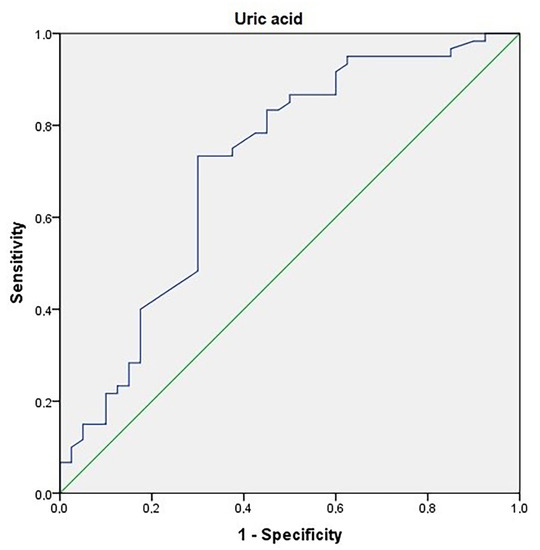
Figure 1
Open AccessArticle
Just Play Cognitive Modern Board and Card Games, It’s Going to Be Good for Your Executive Functions: A Randomized Controlled Trial with Children at Risk of Social Exclusion
by
, , , , , , , and
Children 2023, 10(9), 1492; https://doi.org/10.3390/children10091492 - 31 Aug 2023
Abstract
Modern board and card games are usually used for leisure. Few studies have focused on the type of game played in vulnerable populations. Therefore, the main aim of this study was to test the effectiveness of playing modern board and card games to
[...] Read more.
Modern board and card games are usually used for leisure. Few studies have focused on the type of game played in vulnerable populations. Therefore, the main aim of this study was to test the effectiveness of playing modern board and card games to enhance updating, inhibition, and flexibility in children at risk of social exclusion using games that activated specific basic executive functions. We developed a quadruple-blind randomized clinical trial during the COVID-19 pandemic. Sixty-eight participants (7–12 years old) were divided into two experimental groups: 35 children played games that directly activated basic executive functions, and 33 played games that directly triggered other cognitive domains. The primary statistical analysis consisted of mixed models. We found significant time effects in cognitive flexibility and inhibition and, to a lesser extent, in working memory in both gaming groups. We analyzed the cognitive profile of the games and found that all the games activated basic executive functions significantly, irrespective of the experimental group. Therefore, it is possible that playing any type of modern board and card game (excluding games with a high incidence of luck) could be beneficial for children at risk of social exclusion.
Full article
(This article belongs to the Special Issue Cognitive and Motor Development: Children and Adolescents)
►▼
Show Figures
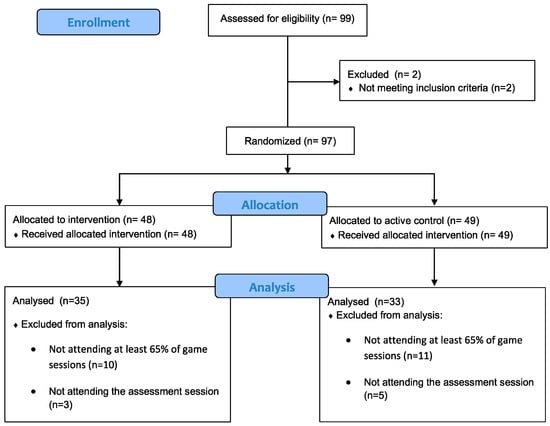
Figure 1
Open AccessCase Report
A Case of Acrodermatitis Dysmetabolica in a Child Affected by Citrullinemia Type I: When Early Diagnosis and Timely Treatment Are Not Enough
by
, , , , , , and
Children 2023, 10(9), 1491; https://doi.org/10.3390/children10091491 - 31 Aug 2023
Abstract
An infant with a prenatal diagnosis of citrullinemia, who started standard treatment at birth (L-arginine; sodium benzoate and a personalized diet characterized by a low protein intake and supplementation of essential nutrients and amino acids), presented at 4 months of age with extended,
[...] Read more.
An infant with a prenatal diagnosis of citrullinemia, who started standard treatment at birth (L-arginine; sodium benzoate and a personalized diet characterized by a low protein intake and supplementation of essential nutrients and amino acids), presented at 4 months of age with extended, progressive, and severe skin lesions consistent with acrodermatitis dysmetabolica. Guidelines for the diagnosis and management of urea cycle disorders underline that a low-protein diet places patients at risk of essential fatty acids, trace elements, and vitamin deficiency. At hospital admission, our patient had normal levels of zinc and alkaline phosphatases. The plasmatic amino acid profile revealed a severe and generalized deficiency. In particular, the serum levels of arginine, valine, and isoleucine were very low and the dermatitis did not improve until the blood levels of these amino acids increased. In our patient, skin lesions happened despite an early diagnosis of citrullinemia and timely treatment due to compliance issues as a consequence of linguistic barriers.
Full article
(This article belongs to the Topic Children’s Diseases, Family Management, and Quality of Life)
►▼
Show Figures
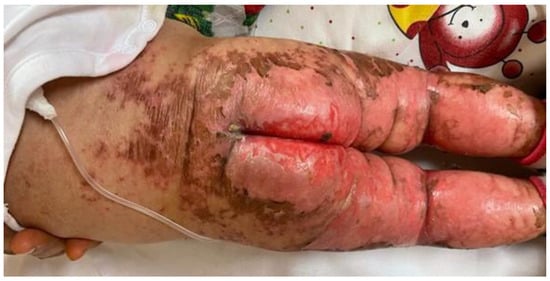
Figure 1
Open AccessArticle
A National Survey on the Clinical Practice Patterns of Korean Medicine Doctors for Attention Deficit Hyperactivity Disorder (ADHD) in Children and Adolescents
by
Children 2023, 10(9), 1490; https://doi.org/10.3390/children10091490 - 31 Aug 2023
Abstract
To alleviate the symptoms of attention deficit/hyperactivity disorder (ADHD) in children and reduce the side effects of psychostimulants, parents are opting for complementary and alternative medicine as a therapeutic option. Korean medicine (KM) has been used by Korean medicine doctors (KMDs) to treat
[...] Read more.
To alleviate the symptoms of attention deficit/hyperactivity disorder (ADHD) in children and reduce the side effects of psychostimulants, parents are opting for complementary and alternative medicine as a therapeutic option. Korean medicine (KM) has been used by Korean medicine doctors (KMDs) to treat ADHD with herbal medication and acupuncture. This study aimed to conduct a cross-sectional survey on the clinical practice patterns of KM for ADHD in children targeting KMDs. The questionnaire included aspects related to patient characteristics, diagnosis, treatment modalities, and perceptions regarding KM. Questionnaires were distributed to all KMDs via e-mail, and the online surveys were conducted from 1 to 15 February 2023. A total 2.1% of KMDs (n = 537/25,574) completed the survey. The predominant diagnostic pattern identification employed was “depressed liver qi transforming into fire” (19.8%). Herbal medicine (HM) was the most common treatment (44.2%). The most frequently used HM prescriptions were Ondam-tang (16.9%), Eokgan-san (15.7%), and Sihogayonggolmoryeo-tang (14.4%). KMDs recognized HM as the most effective among the KM treatments (54.3%). The results of this study elucidate the current clinical practice patterns of KM for ADHD. Based on these findings, a treatment protocol can be developed to provide optimized KM treatment services to patients with ADHD.
Full article
(This article belongs to the Section Integrative Pediatrics)
Open AccessArticle
Children’s Physiological and Perceptual Responses to Sports Exergames When Played in Different Positions
Children 2023, 10(9), 1489; https://doi.org/10.3390/children10091489 - 31 Aug 2023
Abstract
Today’s children are prone to becoming involved in exergames, but their positions during play have not been sufficiently investigated to determine whether the positions they adopt result in equal responses. The design of this study involved the collection of physiological and perceptual responses
[...] Read more.
Today’s children are prone to becoming involved in exergames, but their positions during play have not been sufficiently investigated to determine whether the positions they adopt result in equal responses. The design of this study involved the collection of physiological and perceptual responses (i.e., heart rate (HR), rating of perceived exertion, and enjoyment score) during exergames in three different sports (bowling, tennis, and boxing) with players in different positions (sitting and standing). The participants played each game for 10 min while their HR was recorded. After the gameplay, each perceptual response was retrieved. The results revealed a significant increase in HR above rest during exergaming overall (p < 0.001). Standing gameplay resulted in a significantly higher HR (p < 0.001) than seated gameplay. Compared to tennis and bowling, boxing produced the highest physiological response (p < 0.001) and perceived exertion (p < 0.05) in both positions. The participants perceived all the sports exergames to be enjoyable, as their enjoyment scores did not significantly differ for each game (p > 0.5). For all the variables, no statistically significant differences between genders were identified (p > 0.5). This home-based intervention demonstrated that sports exergames are not only enjoyable; overall, they can provide at least moderately intense physical activity, whether played seated or standing.
Full article
(This article belongs to the Special Issue Monitoring and Promoting Physical Activity, Physical Fitness and Motor Competence in Children (Volume II))
►▼
Show Figures
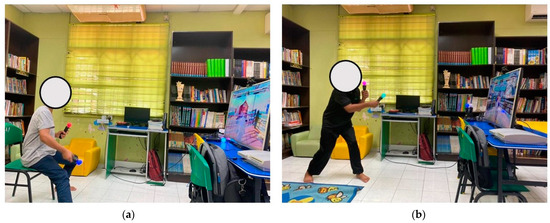
Figure 1
Open AccessArticle
Rectal Biopsy for Hirschsprung’s Disease: A Multicentre Study Involving Biopsy Technique, Pathology and Complications
by
, , , , , , , and
Children 2023, 10(9), 1488; https://doi.org/10.3390/children10091488 - 31 Aug 2023
Abstract
Background: The heterogeneity of rectal biopsy techniques has encouraged us to search for a surgical and pathological standardisation of this diagnostic technique to exclude Hirschsprung’s disease. The different amounts of information on the anatomopathology report prompted us to compile a template for the
[...] Read more.
Background: The heterogeneity of rectal biopsy techniques has encouraged us to search for a surgical and pathological standardisation of this diagnostic technique to exclude Hirschsprung’s disease. The different amounts of information on the anatomopathology report prompted us to compile a template for the anatomopathology report for diagnostic rectal biopsies for surgical colleagues and pathologists working on Hirschsprung’s disease. Methods: We gathered the anonymous biopsy information and its pathology information from five hospitals for all patients in which rectal biopsies were taken to diagnose Hirschsprung’s disease over two years (2020–2021). Results: Of the 82 biopsies, 20 suction (24.4%), 31 punch (37.8%) and 31 open biopsies (37.8%) were taken. Of all biopsies, 69 were conclusive (84.2%), 13 were not (15.8%). In the suction biopsy group, 60% were conclusive and 40% were not; for punch biopsy, the values were 87% and 13%, respectively and for open biopsy, 97% and 3%. Inconclusive results were due to insufficient submucosa in 6/8 suction biopsies, 4/4 punch biopsies and 0/1 open biopsies. An insufficient amount of submucosa was the reason for an inconclusive result in 6/20 cases (30%) after suction biopsy, 4/31 (12.9%) cases after punch biopsy and 0 cases (0%) after open biopsy. We had one case with major postoperative bleeding post suction biopsy; there were no further adverse effects after biopsy. Conclusions: Diagnostic rectal biopsies in children are safe. Non-surgical biopsies are more likely to give inconclusive results due to smaller amounts of submucosa present in the specimen. Open biopsies are especially useful when previous non-surgical biopsies are inconclusive. An experienced pathologist is a key factor for the result. The anatomopathology report should specify the different layers present in the specimen, the presence of ganglion cells and hypertrophic nerve fibres, their description and a conclusion.
Full article
(This article belongs to the Special Issue Advances in Gastrointestinal Surgery in Children)
►▼
Show Figures
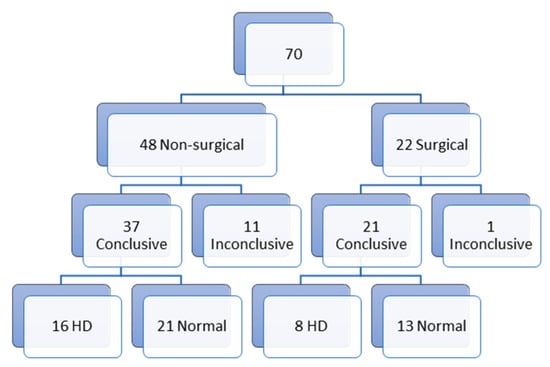
Figure 1
Open AccessArticle
Investigation of Quality of Life of Patients with Atopic Dermatitis and Quality of Life, Psychiatric Symptomatology, and Caregiver Burden of Their Mothers
by
and
Children 2023, 10(9), 1487; https://doi.org/10.3390/children10091487 - 31 Aug 2023
Abstract
Background: The purpose of the present research was to evaluate the quality of life of patients with atopic dermatitis (AD), and that of their mothers. We compared the anxiety and depression scores and caregiving burden of mothers of patients with AD with the
[...] Read more.
Background: The purpose of the present research was to evaluate the quality of life of patients with atopic dermatitis (AD), and that of their mothers. We compared the anxiety and depression scores and caregiving burden of mothers of patients with AD with the same scores of mothers of healthy children. Materials and Methods: A total of 153 patients between the ages of 2 months and 16 years with AD in our clinic, and their mothers, were contained in the patient group. An additional 141 healthy cases between the ages of 2 months and 16 years, and their mothers, were included as the control group. The Children’s Dermatology Life Quality Index (CDLQI) was completed according to the children’s opinions, and the Infant’s Dermatitis Quality of Life Index (IDLQI), Family Dermatology Life Quality Index (FDLQI), Beck Depression Inventory (BDI), Beck Anxiety Inventory (BAI), Temperament Evaluation of Memphis, Pisa, Paris and San Diego Autoquestionnaire, and Zarit Caregiver Burden (ZCB) scale were completed based on the mothers’ opinions. Results: We detected a positive relationship between the SCORAD index and the IDLQI, CDLQI, and FDLQI scores of children with AD. We found that anxiety, depression, and caregiving burden in mothers of AD cases increased when mothers of AD cases were compared with mothers of healthy children (p < 0.0001, p < 0.0001, and p < 0.002, respectively). Also, based on the mothers’ responses, we noted a positive correlation among the BDI, BAI, ZCB, and SCORAD index scores. Conclusions: Our study found that the quality of life of patients with AD, and that of their mothers, was negatively affected by the disease. We also found that anxiety, depression levels (not at the clinical diagnosis level, and the caregiving burden in mothers of AD cases increased when mothers of AD cases were compared with mothers of healthy children.
Full article
(This article belongs to the Topic Children’s Diseases, Family Management, and Quality of Life)
Open AccessArticle
Impact of Music Therapy on Quality of Life in Children with Cancer
by
, , , , , , and
Children 2023, 10(9), 1486; https://doi.org/10.3390/children10091486 - 31 Aug 2023
Abstract
Background: Music therapy (MT) is a non-pharmacological treatment increasingly used to reduce stress and anxiety in hospitalized children affected by cancers. The aim of this study was to evaluate the impact of MT on quality of life in children with cancer and determine
[...] Read more.
Background: Music therapy (MT) is a non-pharmacological treatment increasingly used to reduce stress and anxiety in hospitalized children affected by cancers. The aim of this study was to evaluate the impact of MT on quality of life in children with cancer and determine its effect on cardiorespiratory rates. Methods: We conducted a quasi-experimental study between 1 April and 31 August 2021 at Bechir Hamza children’s Hospital in Tunis, including children treated for cancer. The child or parent completed the PedsQL Module Cancer French version 3.0 questionnaires before and after four weekly music therapy sessions. The child’s respiratory and heart rates were measured before and after each session. Results: We included 20 children whose mean age was 7 ± 4.5 years. The median value of the total questionnaire score increased from 57 [46; 70] to 72 [67; 85] (p < 10−3) noting a significant reduction in pain (p = 0.02), nausea (p = 0.009), and anxiety related to medical procedures (p = 0.009) and worry about the future (p = 0.005). We highlighted a significant decrease in respiratory and heart rate after MT (p < 0.05). Conclusions: MT has positive impact on quality of life in children with cancer and reduces stress by lowering their cardiorespiratory rates.
Full article
(This article belongs to the Topic Children’s Diseases, Family Management, and Quality of Life)
►▼
Show Figures
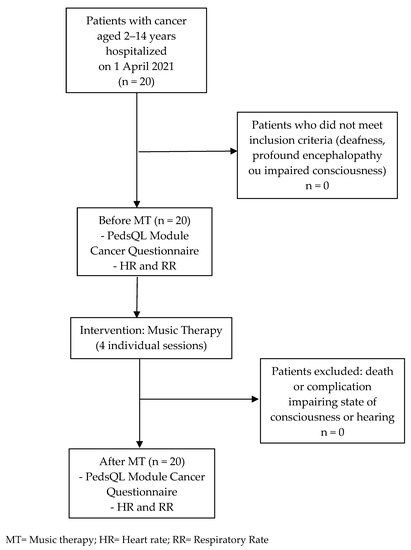
Figure 1
Open AccessArticle
Surviving the Immediate Aftermath of a Disaster: A Preliminary Investigation of Adolescents’ Acute Stress Reactions and Mental Health Needs after the 2023 Turkey Earthquakes
Children 2023, 10(9), 1485; https://doi.org/10.3390/children10091485 - 31 Aug 2023
Abstract
On 6 February, southeastern Turkey and parts of Syria were struck by two powerful earthquakes, one measuring a magnitude of 7.8 and the other, nine hours later, at a magnitude of 7.5. These earthquakes have been recorded as some of the deadliest natural
[...] Read more.
On 6 February, southeastern Turkey and parts of Syria were struck by two powerful earthquakes, one measuring a magnitude of 7.8 and the other, nine hours later, at a magnitude of 7.5. These earthquakes have been recorded as some of the deadliest natural disasters worldwide since the 2010 Haiti earthquake, impacting around 14 million people in Turkey. For trauma survivors, the stressors associated with an event can lead to the development of acute stress disorder (ASD) or other psychiatric disorders. Trauma experiences during adolescence can impact development and affect adolescents differently than adults. Although ASD in adults has been addressed in several studies, there is much less information available about how younger populations respond to acute stress. The aim of our study was to assess the occurrence of ASD among individuals seeking help at the Şanlıurfa Mehmet Akif İnan Research and Training Hospital Child and Adolescent Outpatient Clinic following the 2023 Turkey Earthquakes and the factors associated with acute stress reactions. A child and adolescent psychiatry specialist conducted psychiatric interviews with the adolescents, and the individuals were also asked to complete ‘The National Stressful Events Survey Acute Stress Disorder Short Scale’ (NSESSS) to evaluate acute stress symptoms. ASD diagnoses were established according to the Diagnostic and Statistical Manual of Mental Disorders, Fifth Edition (DSM-5) criteria. Results showed that 81.6% of the participants (n = 49) were diagnosed with ASD, and drug treatment was initiated in 61.7% of the cases (n = 37). It was determined that ASD rates did not differ according to gender, and patients without physical injury had higher acute stress symptom scores (p > 0.05). According to the logistic regression models, paternal educational levels and adolescents’ own requests for psychiatric assistance were predictors of acute stress disorder (OR 10.1, β = 2.31, p = 0.006 and OR 16.9, 95 β = 2.83, p = 0.001, respectively). Our findings revealed striking results in demonstrating the need for careful evaluation of adolescents without physical injury in terms of acute stress disorder and the need to pay close attention to the psychiatric complaints of adolescents willing to seek mental health assistance. Moreover, our study suggests that the proportion of adolescents experiencing acute stress symptoms after earthquakes might be higher than previously reported. Estimation of the incidence rate and symptoms of psychiatric distress in the short-term period following a disaster is important for establishing disaster epidemiology and implementing efficient relief efforts in the early stages. The outcomes of this study have the potential to yield novel insights into the realms of disaster mental health and emergency response policies, as well as their pragmatic implementations.
Full article
(This article belongs to the Special Issue Behavioral and Mental Health Problems in Children)
►▼
Show Figures
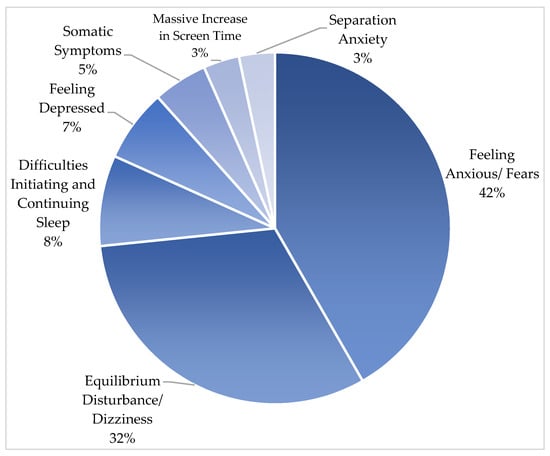
Figure 1
Open AccessArticle
Quality Improvement Project to Improve Hand Hygiene Compliance in a Level III Neonatal Intensive Care Unit
Children 2023, 10(9), 1484; https://doi.org/10.3390/children10091484 - 30 Aug 2023
Abstract
This quality improvement project aimed to improve hand hygiene (HH) compliance in a Level III Neonatal Intensive Care Unit. The project was conducted over three Plan–Do–Study–Act (PDSA) cycles, with each cycle lasting two months. The interventions included healthcare worker (HCW) education on HH,
[...] Read more.
This quality improvement project aimed to improve hand hygiene (HH) compliance in a Level III Neonatal Intensive Care Unit. The project was conducted over three Plan–Do–Study–Act (PDSA) cycles, with each cycle lasting two months. The interventions included healthcare worker (HCW) education on HH, repetition of education, and immediate feedback to HCWs. Compliance data were collected through covert observations of HCWs in the NICU. The overall compliance rate increased from 31.56% at baseline to 46.64% after the third PDSA cycle. The HH compliance was noted to be relatively low after touching patient care surroundings, at entry and exit from the NICU main unit, before wearing gloves and after removing gloves, at baseline and throughout the three PDSA cycles. HCW education alone did not result in significant improvements, highlighting the need for additional interventions. The study underscores the importance of involving NICU leadership and providing immediate feedback to promote HH compliance. Further efforts should focus on addressing the false sense of security associated with glove usage among HCWs, individual rewards and involving the healthcare staff in the shared goal of increasing HH compliance. Consideration of workload metrics and their impact on compliance could steer future interventions.
Full article
(This article belongs to the Special Issue Comprehensive Care of Critically Ill Infants and Children)
►▼
Show Figures
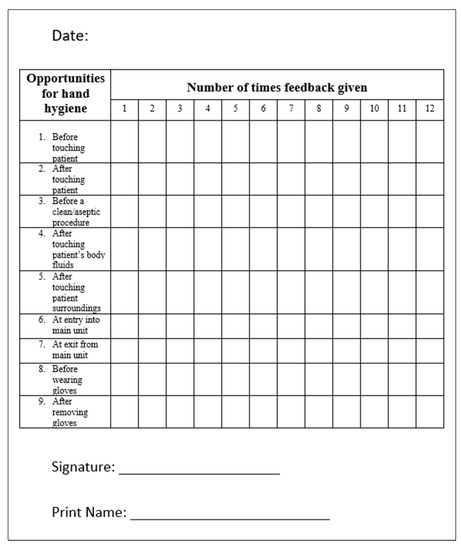
Figure 1
Open AccessArticle
The Effect of House Dust Sensitization on Skin Sebum and Moisture in Children with Allergic Respiratory Diseases
Children 2023, 10(9), 1483; https://doi.org/10.3390/children10091483 - 30 Aug 2023
Abstract
This study aimed to investigate the levels of skin moisture and sebum in children with a house dust allergy without skin symptoms. This was a case–control study involving children, aged 0–18 years, who were being followed up for an allergic airway disease in
[...] Read more.
This study aimed to investigate the levels of skin moisture and sebum in children with a house dust allergy without skin symptoms. This was a case–control study involving children, aged 0–18 years, who were being followed up for an allergic airway disease in a pediatric allergy clinic. Age, gender, hemogram parameters, and IgE values were evaluated. The skin moisture and sebum percentages of the patients and control group were measured by a non-invasive bioimpedance method using a portable digital skin moisture and sebum measurement device on the cubital fossa. The median value of the skin moisture percentage in the house dust mite allergy-positive patient group was significantly lower than that in the house dust mite allergy-negative patients and the control group (p < 0.001). The house dust mite allergy-positive patient group had the lowest skin sebum content. However, there was no statistical significance among the groups in terms of skin sebum percentage (p = 0.102). In the study, children with a house dust allergy were found to have lower levels of skin moisture and sebum. The regular use of moisturizers for children with a house dust allergy should be kept in mind as an effective solution to protect the skin barrier and reduce skin symptoms.
Full article
(This article belongs to the Special Issue Reviews in Pediatric Dermatology)
►▼
Show Figures
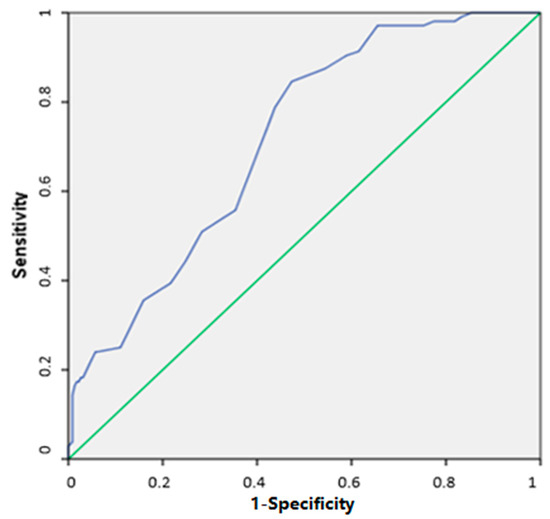
Figure 1
Open AccessStudy Protocol
Collaborating to Improve Neonatal Care: ParentAl Participation on the NEonatal Ward—Study Protocol of the neoPARTNER Study
Children 2023, 10(9), 1482; https://doi.org/10.3390/children10091482 - 30 Aug 2023
Abstract
Parents are often appointed a passive role in the care for their hospitalised child. In the family-integrated care (FICare) model, parental involvement in neonatal care is emulated. Parental participation in medical rounds, or family-centred rounds (FCR), forms a key element. A paucity remains
[...] Read more.
Parents are often appointed a passive role in the care for their hospitalised child. In the family-integrated care (FICare) model, parental involvement in neonatal care is emulated. Parental participation in medical rounds, or family-centred rounds (FCR), forms a key element. A paucity remains of randomised trials assessing the outcomes of FCR (embedded in FICare) in families and neonates, and outcomes on an organisational level are relatively unexplored. Likewise, biological mechanisms through which a potential effect may be exerted are lacking robust evidence. Ten level two Dutch neonatal wards are involved in this stepped-wedge cluster-randomised trial FCR (embedded in FICare) by one common implementation strategy. Parents of infants hospitalised for at least 7 days are eligible for inclusion. The primary outcome is parental stress (PSS:NICU) at discharge. Secondary outcomes include parental, neonatal, healthcare professional and organisational outcomes. Biomarkers of stress will be analysed in parent–infant dyads. With a practical approach and broad outcome set, this study aims to obtain evidence on the possible (mechanistic) effect of FCR (as part of FICare) on parents, infants, healthcare professionals and organisations. The practical approach provides (experiences of) FICare material adjusted to the Dutch setting, available for other hospitals after the study.
Full article
(This article belongs to the Special Issue Family-Oriented Research to Improve Care of Preterm Infants)
►▼
Show Figures

Figure 1
Open AccessReview
The Effectiveness of a Low Glycemic Index/Load Diet on Cardiometabolic, Glucometabolic, and Anthropometric Indices in Children with Overweight or Obesity: A Systematic Review and Meta-Analysis
by
, , , and
Children 2023, 10(9), 1481; https://doi.org/10.3390/children10091481 - 30 Aug 2023
Abstract
►▼
Show Figures
(1) Background: This systematic review and meta-analysis aims to evaluate the impact of a low glycemic index (LGI) and low glycemic load (LGL) diet on children with overweight and obesity, analyzing any changes in anthropometric, cardiometabolic, and glucometabolic parameters. (2) Methods: Three electronic
[...] Read more.
(1) Background: This systematic review and meta-analysis aims to evaluate the impact of a low glycemic index (LGI) and low glycemic load (LGL) diet on children with overweight and obesity, analyzing any changes in anthropometric, cardiometabolic, and glucometabolic parameters. (2) Methods: Three electronic databases (PubMed, Scopus, CENTRAL), as well as clinical trial registries and reference lists of the included studies, were searched for eligible randomized control trials (RCTs). Two independent reviewers performed the screening of the studies, data extraction, and risk of bias assessment. Mean difference (MD) and 95% confidence intervals (CI) using a random effects model were calculated for each outcome. (3) Results: Eleven RCTs (n = 634) examining the effect of LGI diet versus control were identified. The synthesized data provided from the RCTs indicate no difference between intervention and control groups regarding primary outcomes (body weight (MD: −0.14; 95% CI −1.93 to 1.64, 5 trials), body mass index (BMI) (MD: −0.31; 95% CI −0.85 to 0.23, 6 trials), BMI z-score (MD: −0.03; 95% CI −0.09 to 0.02, 5 trials), and waist circumference (MD: −0.52; 95% CI −2.35 to 1.31, 5 trials)) and other measures of cardiometabolic and glucometabolic parameters. The majority of trials were classified as “some concerns”. (4) Conclusions: LGI and LGL diets do not seem to be associated with changes in adiposity, cardiometabolic or glucometabolic markers in children with overweight or obesity. Further research comparing the LGI diet to a high glycemic index diet, with proper methodological standards, is required to clarify the benefits of a LGI diet in this population.
Full article
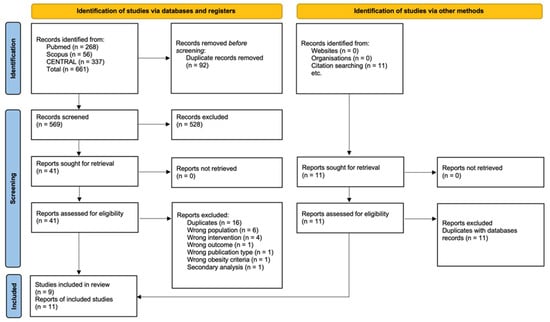
Figure 1
Open AccessArticle
Intervention Based on Psychomotor Rehabilitation in Children with Autism Spectrum Disorder ASD: Effect on Postural Control and Sensory Integration
by
, , , , , and
Children 2023, 10(9), 1480; https://doi.org/10.3390/children10091480 - 30 Aug 2023
Abstract
Postural stability and control are essential motor skills for successfully performing various activities of daily living. However, children with autism spectrum disorder (ASD) exhibit significant sensorimotor impairments. The aim of this study was to investigate the efficacy of psychomotricity training on postural control
[...] Read more.
Postural stability and control are essential motor skills for successfully performing various activities of daily living. However, children with autism spectrum disorder (ASD) exhibit significant sensorimotor impairments. The aim of this study was to investigate the efficacy of psychomotricity training on postural control (PC) of children with ASD. We recruited thirty children (age = 8.01 ± 1.2; weight = 31.66 ± 8.1 kg; height = 129.7 ± 10.8 cm) diagnosed with ASD (intellectual quotient > 50) to participate in this study. They were divided into two groups: the experimental group (n = 16) and control group (n = 14). Children in the experimental group were trained with psychomotor activities two times a week for nine weeks. Statistic postural balance was assessed before and after intervention and on different vision conditions. The results showed that the psychomotor training significantly improved PC in standing position under different conditions when compared to the control group, in all parameters (CoPA; CoPLX; CoPLy) (p < 0.01). Our preliminary findings suggest the usefulness of the psychomotor training in children with ASD on static PC.
Full article
(This article belongs to the Special Issue Advances in Autism Research: Diagnosis, Treatment and Best Practices)
►▼
Show Figures

Figure 1
Open AccessArticle
Correlation of Speckle-Tracking Echocardiography with Traditional Biomarkers in Predicting Cardiotoxicity among Pediatric Hemato-Oncology Patients: A Comprehensive Evaluation of Anthracycline Dosages and Treatment Protocols
by
, , , , , , , , and
Children 2023, 10(9), 1479; https://doi.org/10.3390/children10091479 - 30 Aug 2023
Abstract
Speckle tracking-echocardiography (STE) is a novel non-invasive imaging tool capable of quantifying myocardial deformation, and thus holds promise in detecting early subclinical myocardial injury. This study aimed to evaluate the correlation of STE with traditional biomarkers in predicting anthracycline-induced cardiotoxicity in the context
[...] Read more.
Speckle tracking-echocardiography (STE) is a novel non-invasive imaging tool capable of quantifying myocardial deformation, and thus holds promise in detecting early subclinical myocardial injury. This study aimed to evaluate the correlation of STE with traditional biomarkers in predicting anthracycline-induced cardiotoxicity in the context of varying dosages and treatment protocols in pediatric hemato-oncology patients. We conducted a retrospective study involving pediatric hemato-oncology patients undergoing anthracycline-based chemotherapy. A total of 99 patients were included in the final analysis, with 82 receiving Doxorubicin, of which 58.5% were males, and 17 receiving Epirubicin, of which 70.6% were males, with a median of 10 years old. Traditional biomarkers, such as Troponin I (cTnI) and B-type natriuretic peptide (BNP), were compared with STE parameters, including the global longitudinal strain (GLS), Simpson method of discs (SMOD), and myocardial performance index (MPI). A comprehensive evaluation was conducted based on different dosages of anthracyclines and different treatment protocols, with a follow-up period of one year post-chemotherapy. It was observed that the cTnI levels in the Doxorubicin group were significantly higher (3.2 ng/mL, p = 0.002) than in the Epirubicin group (2.7 ng/mL). However, BNP and NT-proBNP levels were not significantly different between the two groups (p = 0.096 and p = 0.172, respectively). Regarding STE parameters, a significant negative correlation was observed between the anthracycline dose and GLS (Rho = −0.411, p = 0.001), indicating increased cardiotoxicity with dose elevation. The SMOD and MPI gave significantly better values in the Epirubicin group (59.2 and 0.41 vs. 54.4 and 0.36, respectively). However, the ROC analysis did not find GLS, SMOD, or MPI to be significant independent predictors of cardiotoxicity (p > 0.05). There was also considerable variation in cardiotoxicity between the Doxorubicin and Epirubicin study groups, suggesting that the risk of cardiotoxicity is not solely determined by dose. Our study underlines the potential of STE as a sensitive tool for the early detection and prediction of anthracycline-induced cardiotoxicity in pediatric hemato-oncology patients, but only in association with the clinical findings and cardiac biomarkers. While traditional biomarkers still play a role, STE can offer a more accurate prediction of cardiac risk, potentially leading to better management and outcomes for these patients.
Full article
(This article belongs to the Special Issue Research Progress of the Pediatric Cardiology—Volume 2)
►▼
Show Figures
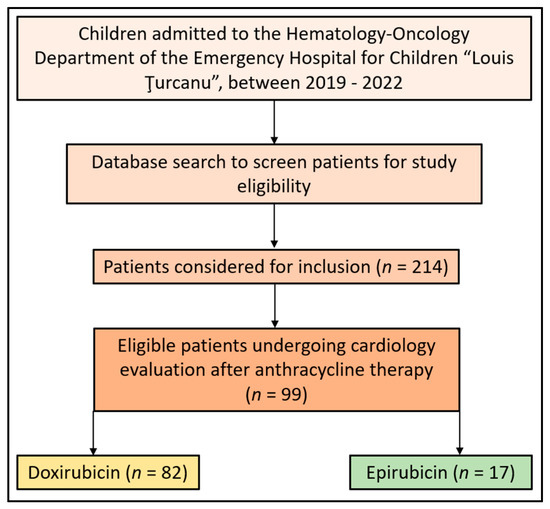
Figure 1
Open AccessArticle
Does the Mediterranean Dietary Pattern Promote Lower Sodium Urinary Excretion in Children?
by
, , , , , , , and
Children 2023, 10(9), 1478; https://doi.org/10.3390/children10091478 - 30 Aug 2023
Abstract
►▼
Show Figures
An adequate sodium intake is related to various health benefits. Parallelly, the Mediterranean diet (MD) is a dietary pattern known for its many positive impacts on health. Nonetheless, the association between adherence to the MD and sodium urinary excretion is scarce, even more
[...] Read more.
An adequate sodium intake is related to various health benefits. Parallelly, the Mediterranean diet (MD) is a dietary pattern known for its many positive impacts on health. Nonetheless, the association between adherence to the MD and sodium urinary excretion is scarce, even more in children. This study aimed to assess the association between MD adherence and the excretion of sodium, as a proxy of intake. This cross-sectional analysis comprised 295 children (46.8% females, aged 7–11 years, mean age: 8.53 ± 0.73 years) from 20 schools within Porto, Portugal. MD adherence was evaluated utilizing the alternate Mediterranean score (aMED). Higher scores denote a healthier dietary pattern (0–8). Sodium excretion was estimated by 24-h urine collection. The association between adherence to MD and Na excretion was estimated by logistic regression, adjusting for confounders. Children in the higher sodium excretion group had a higher intake of legumes, a higher body mass index and parents with lower education levels compared to children in the lower sodium excretion group. In logistic regression analysis, sodium urinary excretion was not associated with higher MD adherence, even after adjustment for confounders. High MD adherence could not be associated with lower sodium excretion in children.
Full article
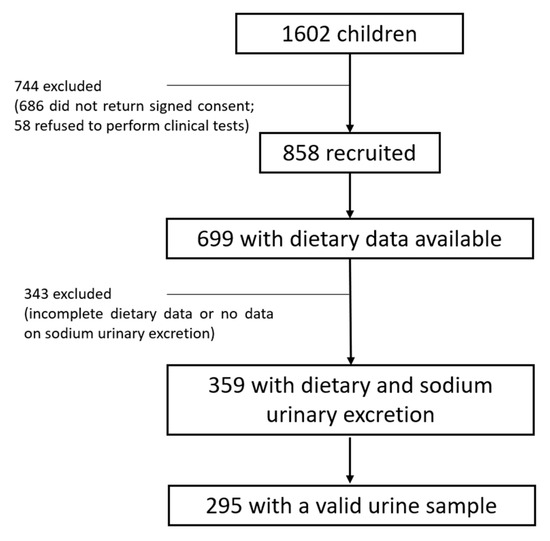
Figure 1
Open AccessArticle
Peripartum Traumas and Mental Health Outcomes in a Low-Income Sample of NICU Mothers: A Call for Family-Centered, Trauma-Informed Care
by
, , , , , and
Children 2023, 10(9), 1477; https://doi.org/10.3390/children10091477 - 30 Aug 2023
Abstract
Postpartum depression (PPD), postpartum anxiety (PPA), and post-traumatic stress disorder (PTSD) among birthing people have increased substantially, contributing to adverse maternal/infant dyad outcomes, with a high prevalence in the neonatal intensive care unit (NICU). Despite calls for trauma-informed care in the NICU and
[...] Read more.
Postpartum depression (PPD), postpartum anxiety (PPA), and post-traumatic stress disorder (PTSD) among birthing people have increased substantially, contributing to adverse maternal/infant dyad outcomes, with a high prevalence in the neonatal intensive care unit (NICU). Despite calls for trauma-informed care in the NICU and high rates of post-traumatic stress, little research has examined the rates of or the relationships between peripartum mood and adverse child experiences (ACEs) in NICU mothers or evaluated which peripartum traumas are most distressing. This study employed structural equation modeling (SEM) to explore whether peripartum-related traumas and NICU-related stressors mediated the associations between ACEs and mental health outcomes in 119 lower-income, racially diverse mothers in a Level IV NICU. Mental health concerns were prevalent and highly comorbid, including 51.3% PPA, 34.5% PPD, 39.5% post-traumatic stress, and 37% with ≥4 ACEs. The majority (53.8%) of mothers endorsed multiple peripartum traumas; NICU admission was the most common trauma (61%), followed by birth (19%), pregnancy (9%), and a medical event in the NICU (9%). Our SEMs had good fit and demonstrated that ACEs predicted peripartum distress. Trauma-informed care efforts should employ transdiagnostic approaches and recognize that women commonly present to the NICU with childhood trauma history and cumulative peripartum traumas.
Full article
(This article belongs to the Special Issue Family Centered Neonatal and Maternity Care)
►▼
Show Figures
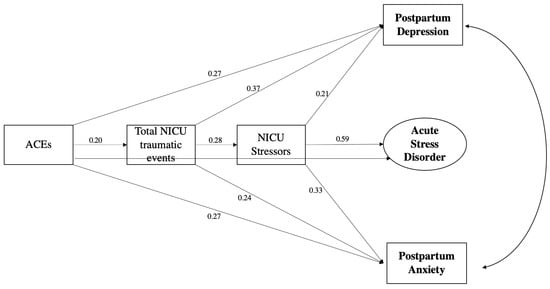
Figure 1

Journal Menu
► ▼ Journal Menu-
- Children Home
- Aims & Scope
- Editorial Board
- Reviewer Board
- Topical Advisory Panel
- Instructions for Authors
- Special Issues
- Topics
- Sections & Collections
- Article Processing Charge
- Indexing & Archiving
- Editor’s Choice Articles
- Most Cited & Viewed
- Journal Statistics
- Journal History
- Journal Awards
- Conferences
- Editorial Office
- 10th Anniversary of Children
Journal Browser
► ▼ Journal BrowserHighly Accessed Articles
Latest Books
E-Mail Alert
News
Topics
Topic in
Children, Dietetics, Foods, IJERPH, Nutrients
Nutrition Education, Food Literacy and Healthy Diets in Childhood and Adolescence
Topic Editors: Maha Hoteit, Reema Tayyem, Hassan YounesDeadline: 31 December 2023
Topic in
Children, Dentistry Journal, IJERPH, Nutrients, Oral
Oral Health Management for Children, Adolescents, and Adults, 2nd Volume
Topic Editors: Daisuke Ekuni, Hiroaki InabaDeadline: 1 February 2024
Topic in
Adolescents, Children, Healthcare, IJERPH, JCM, Nutrients, Behavioral Sciences, Social Sciences
Socio-Environmental Determinants of the Disparities in Health Behaviors among Minority Youth
Topic Editors: Ryan D. Burns, You FuDeadline: 29 February 2024
Topic in
Children, Education Sciences, Healthcare, Mathematics
Diversity, Educational Inclusion, Emotional Intelligence, Coping, and Other Factors That Influence Psychological Health and Well-Being
Topic Editors: Francisco Manuel Morales Rodríguez, Juan Pedro Martínez-RamónDeadline: 25 April 2024

Conferences
Special Issues
Special Issue in
Children
School Psychopharmacology and Children’s Mental Health
Guest Editor: John S. CarlsonDeadline: 1 September 2023
Special Issue in
Children
Current Diagnostic Tools for Dentomaxillofacial Abnormalities and Malformations among Children
Guest Editor: Chiarella SforzaDeadline: 15 September 2023
Special Issue in
Children
Current Treatment of Pediatric Bowel Diseases
Guest Editor: Stefan Holland-CunzDeadline: 30 September 2023
Special Issue in
Children
Pediatric Intensive Care – Practice and Research
Guest Editors: Martin E.G. Blohm, Dominique SingerDeadline: 20 October 2023
Topical Collections
Topical Collection in
Children
Pediatric Palliative Care Update
Collection Editor: Regina Okhuysen-Cawley
Topical Collection in
Children
Novel Treatments, Approaches, Prevention Strategies and Insights in Pediatric, Adolescent, and Gynecological Endocrinology
Collection Editors: Dimitrios Papadimitriou, Nicoletta Iacovidou, Nikos F. Vlahos, George Mastorakos
Topical Collection in
Children
Emotional and Behavioral Problems in Children and Adolescents: Assessment and Intervention
Collection Editors: Pietro Muratori, Valentina Levantini




.jpg)
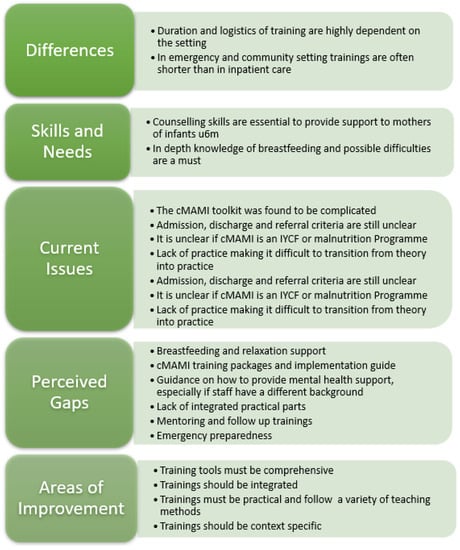
.jpg)










